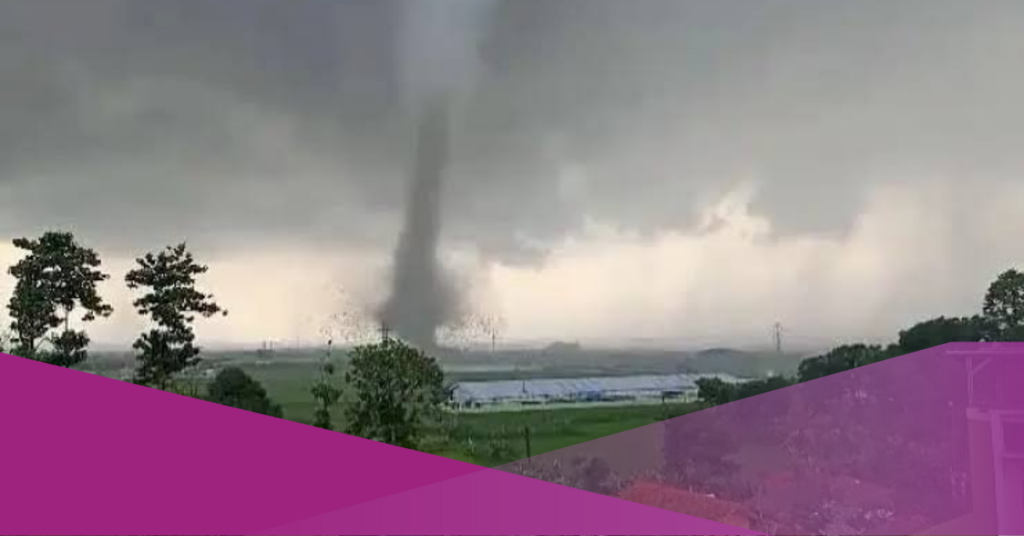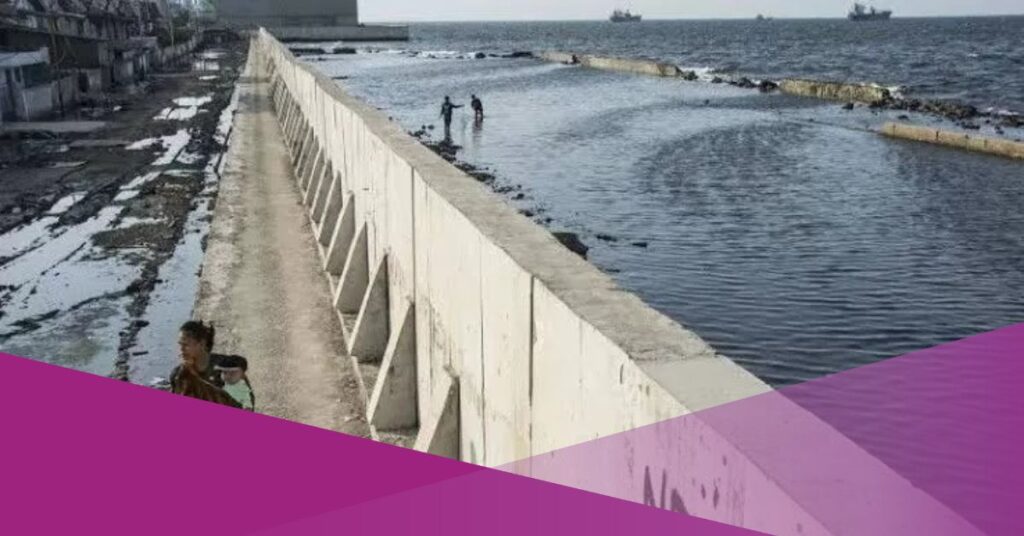On 21st February 2024, Bandung experienced an extraordinary natural phenomenon—a tornado classified as an F2 (Significant Tornado) on the scale, striking Indonesia around 4 PM local time. This formidable tornado swept through regions including Bandung and Sumedang Regencies, leaving a trail of destruction in its wake.
Yuan, a resident of Rancaekek, provided a firsthand account of witnessing the initial formation of the tornadoes. He described observing a small-scale whirlwind in the sky over the Bandung regency area, which rapidly escalated into massive tornadoes, wreaking havoc across various parts of Bandung.
Kami tim periset dari BRIN secepatnya akan melakukan rekonstruksi dan investigasi tornado Rancaekek pada hari ini (21/2). Kronologi foto-foto dan video dari masyarakat dan media sangat membantu periset dalam mendokumentasikan extreme event yg tercatat sebagai tornado pertama ini. pic.twitter.com/x35Rk4Yhqc
— Dr. Erma Yulihastin (@EYulihastin) February 21, 2024
Erma Yulihastin, a Climatologist at the Climate and Atmosphere Research Center of the National Research and Innovation Agency (BRIN), shared her insights via her X account regarding the Rancaekek tornadoes.
“We, a team of researchers from BRIN, will promptly commence the reconstruction and investigation of the Rancaekek tornado today (21/2). The chronology of photos and videos from the public and the media greatly aids researchers in documenting this unprecedented event, which marks the first occurrence of tornadoes,” Dr Erma conveyed on 21st February at 9:53 PM local time
Struktur tornado Rancaekek, Indonesia, dibandingkan dengan tornado yang biasa terjadi di belahan bumi utara, Amerika Serikat. Memiliki kemiripan 99,99% alias mirip bingits! pic.twitter.com/3vgxrSexQD
— Dr. Erma Yulihastin (@EYulihastin) February 22, 2024
In the days leading up to the tornado incident in Indonesia, many netizens and residents of Bandung shared photos and videos capturing the moments before the tornadoes struck. An upload by the @sicep4t account showed a swirling formation of clouds in the sky, gradually intensifying in size. This footage was taken shortly before the tornado hit Bandung.
Erma also noted that the structure of tornadoes in Indonesia bears a striking resemblance to those in the United States, with a similarity of 99.9%.
The tornado storm wreaked havoc in the Bandung and Sumedang areas, causing extensive damage to various large buildings. Among the affected structures was Unit 1 of the PT Kewalram Indonesia factory, whose roof was destroyed by the tornado. Additionally, numerous large trucks overturned on the roads due to the storm, leading to a complete power outage in Bandung and Sumedang districts since 4 PM.
The occurrence of the F2 tornado storm in Indonesia serves as a stark reminder of the extreme climate change we are currently witnessing. Tornado strength is typically measured using the Fujita scale, with each scale representing different characteristics and degrees of intensity.
| SCALE | WIND ESTIMATE *** (MPH) | TYPICAL DAMAGE |
| F0 | < 73 | Light damage. Some damage to chimneys; branches broken off trees; shallow-rooted trees pushed over, and sign boards damaged. |
| F1 | 73-112 | Moderate damage. Peels surface off roofs; mobile homes pushed off foundations or overturned; moving autos blown off roads. |
| F2 | 113-157 | Considerable damage. Roofs torn off frame houses; mobile homes demolished; boxcars overturned; large trees snapped or uprooted; light-object missiles generated; cars lifted off ground. |
| F3 | 158-206 | Severe damage. Roofs and some walls were torn off well-constructed houses; trains overturned; most trees in the forest were uprooted; heavy cars were lifted off the ground and thrown. |
| F4 | 207-260 | Devastating damage. Well-constructed houses levelled; structures with weak foundations blown away some distance; cars thrown and large missiles generated. |
| F5 | 261-318 | Incredible damage. Strong frame houses levelled off foundations and swept away; automobile-sized missiles fly through the air over 100 meters (109 yds); trees debarked; incredible phenomena will occur. |
































